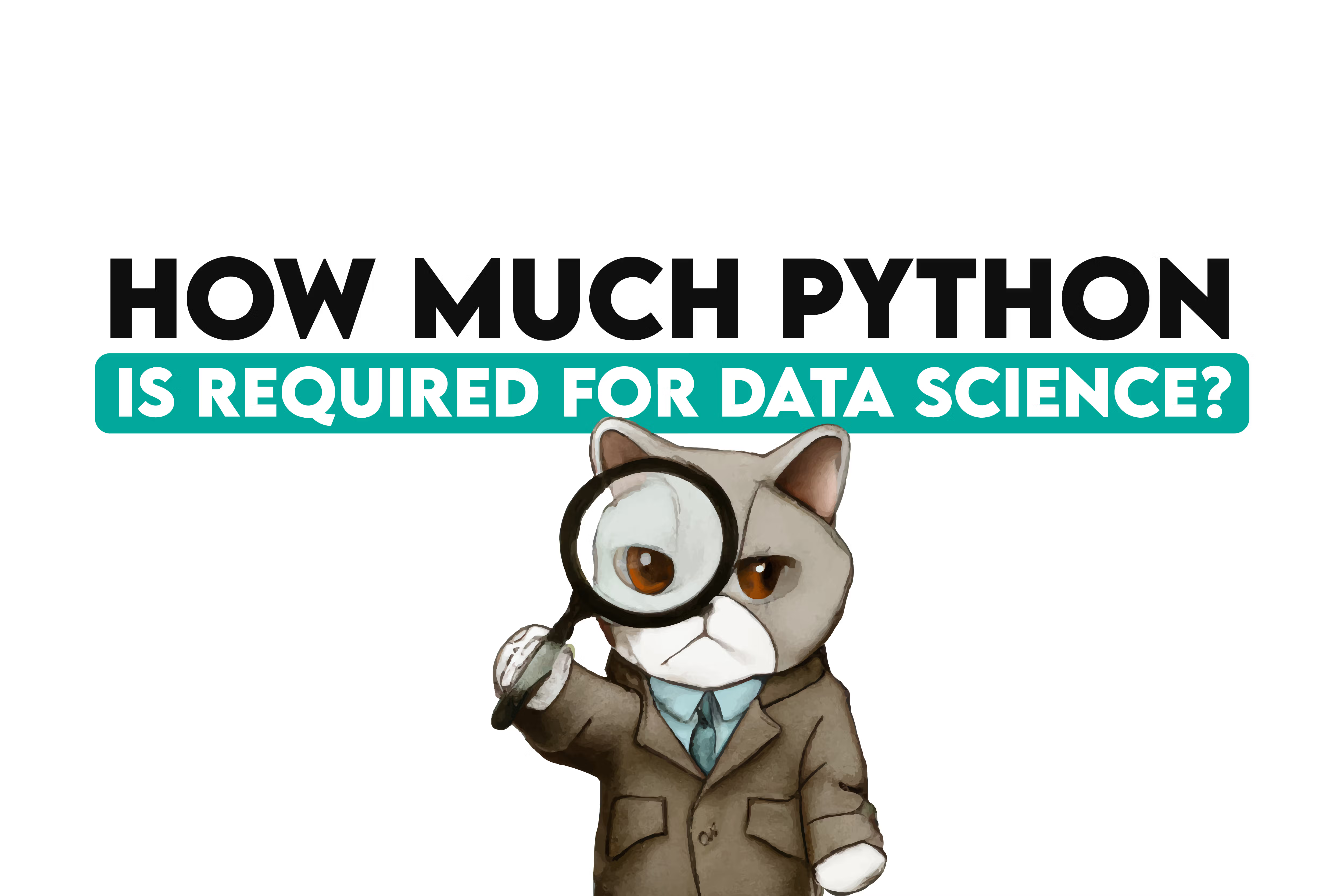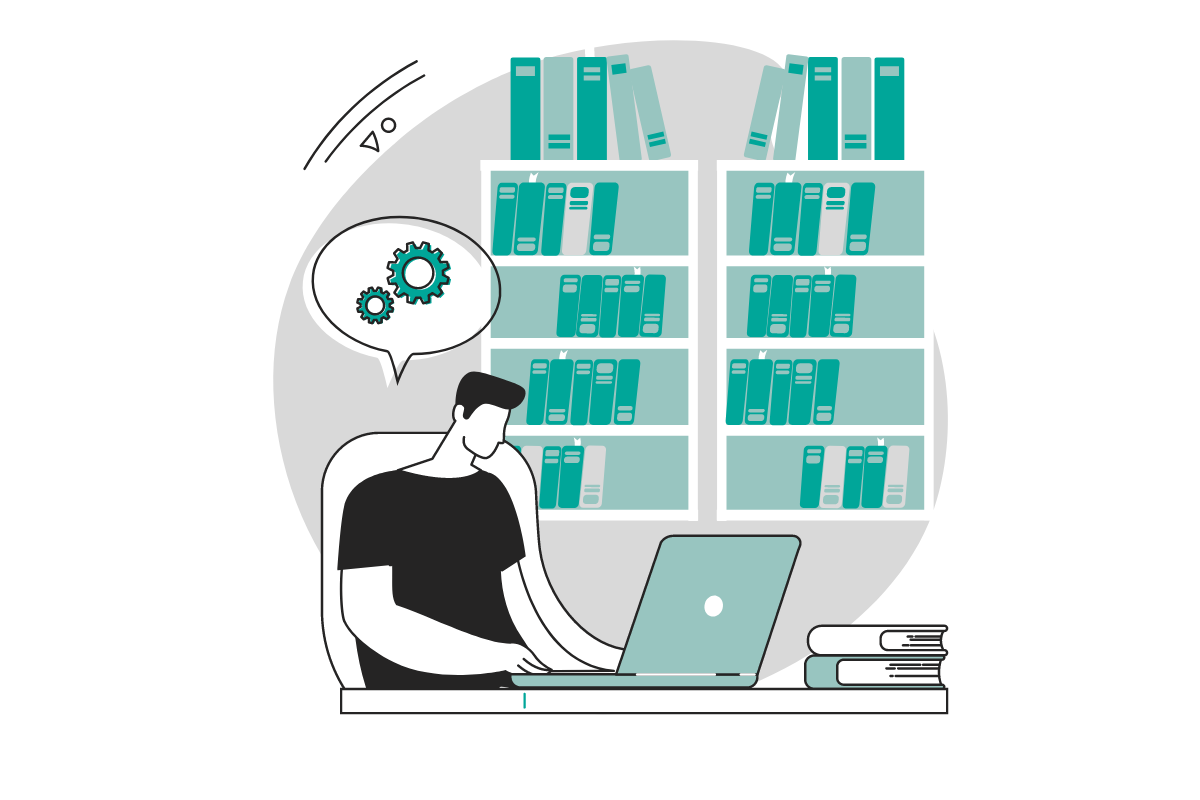How Much Python is Required for Data Science?

 Written by:
Written by:Nathan Rosidi
As a data science aspirant, you might be wondering how much Python is required for data science. Learn Python concepts that are needed for data science.
If you are an aspiring data scientist, you might be wondering how much Python is required for data science work. And if you've read Python's introduction, you already know that due to its efficiency and code readability, Python is one of the most widely used programming languages. Python is often the choice for data scientists who need to perform data analysis and whose tasks need to be integrated with web applications or production environments.
In this article, we will explain how much Python is required for data analytics or data science. We'll cover all the Python programming concepts that are needed to start your data science journey.
Python Fundamentals for Data Science
The first step in learning Python is to understand the fundamentals of Python. In the Python fundamentals, you'll want to learn about powerful ways to store and manipulate data, and data science tools to begin organizing your analysis. You should know the basic concepts of Python and how to use Python interactively by using the script. So, how much Python fundamentals is needed for data science?
Python fundamentals can be broken down into the following essential concepts:
- The first step is to understand the data types and structures. You should be familiar with widely used data types, integers (int), floats (float), strings (str), and booleans (bool).
- The next step is to learn compound data types (lists, tuples, and dictionaries).
- Conditions and Branching: Python uses boolean variables to assess conditions. Whenever there is an evaluation or comparison, boolean values are the solution.
- Loops: In order to perform a repetitive task, loops can help you to eliminate the overhead of code redundancy.
- Functions: It's common to face similar tasks many times and functions is a convenient way to manage your code.
- Last but not least - Object-oriented programming and external libraries
These concepts cover the fundamentals of Python and get you started with data science.
Most Important and Basic Libraries for Python in Data Science

This is the main part of understanding how much Python is really required for data science. The extensive set of libraries is the greatest assets of Python. It makes it easier for data scientists to perform complex tasks without rewriting many lines of code. As a data scientist, you must know about the following important libraries that make Python a robust and powerful tool for data analysis and visualization.
NumPy
As one of the most fundamental packages in Python, NumPy helps us with high-performance multidimensional tools and array objects. NumPy is extensively used in data analysis. Its main object is homogeneous multidimensional array. In Python, it is the basic package for numerical computation. It provides fast and precompiled functions. It supports an object-oriented approach and array-oriented computing to have better efficiency.
Pandas
Pandas is an open-source package in Python and must in data science. Pandas is one of the widely used and most popular and library for data science. It is designed for practical data analysis in finance, social sciences, statistics, and engineering. Pandas helps with high-performance and easy-to-use data structures and analysis tools for the labeled data. It works well with incomplete, messy, and unlabeled data and provides tools to have shaped, merged, reshaped, and slicing datasets.
Matplotlib
Matplotlib undoubtedly provides powerful and beautiful visualizations. It has a huge vibrant community of contributors. You can create several stories with the data visualized using Matplotlib. It is the plotting library that helps you to create any visualization like Line plots, Area plots, Scatter plots, Stem plots, Contour plots, Bar charts and Histograms, Pie charts, Quiver plots, Spectrograms, etc.
SciPy
Scientific Python or SciPy is a free and open-source library for data science. It is used for high-level technical computations. It builds on NumPy and uses arrays as its basic data structure. It provides high-level commands for data manipulation and data visualization.
Also, check out our post "Python Libraries" to find the top 18 Python libraries that every data scientist should know to maximize their potential.
Advanced Data Science Techniques
Data science is a growing field that covers numerous industries. Keep learning and aim to sharpen your skills. The data science journey is full of constant learning and you have to cover all the bases. You have to be comfortable with topics like:
- Regression
- Classification
- K-means clustering models, and much more
How Long Does It Take to Learn Python for Data Science?
Most aspiring data scientists or data analysts want to know: How long does it take to learn Python for data science?
There are a lot of estimates regarding this question. For data science, the estimate is a range from 3 months to a year while practicing consistently. It also depends on the time you can dedicate to learning Python for data science. However, it can be said that most learners take at least 3 months to complete the Python for data science learning path.
Conclusion
We've discussed how much Python is required for data science. The availability of packages such as NumPy, Pandas, Matplotlib, SciPy, etc. makes eligible anyone with a basic programming background to build a machine learning model. Now, we can say that to make a career in data science, you should be familiar with Python fundamentals and the standard libraries.
If you're confused between the two statistical languages Python and R and want to know which language is better, check out our article on Python vs R for Data Science.
Share


